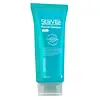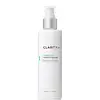What's inside
What's inside
 Key Ingredients
Key Ingredients

 Benefits
Benefits

 Concerns
Concerns

 Ingredients Side-by-side
Ingredients Side-by-side

Water
Skin ConditioningSodium Methyl Cocoyl Taurate
CleansingCocamidopropyl Hydroxysultaine
CleansingCocamidopropyl Betaine
CleansingDisodium Laureth Sulfosuccinate
CleansingAscorbyl Palmitate
AntioxidantSodium Ascorbyl Phosphate
AntioxidantLactic Acid
BufferingGlycyrrhiza Glabra Root Extract
BleachingArctostaphylos Uva-Ursi Leaf Extract
Skin ConditioningBakuchiol
AntimicrobialLilium Candidum Leaf Cell Extract
Skin ConditioningNiacinamide
SmoothingAllantoin
Skin ConditioningCitrus Aurantium Dulcis Peel Oil
MaskingPanthenol
Skin ConditioningCamellia Sinensis Leaf Extract
AntimicrobialGlycerin
HumectantGlyceryl Laurate
EmollientSodium Hydroxide
BufferingPotassium Sorbate
PreservativePolysorbate 20
EmulsifyingPhenoxyethanol
PreservativeEthylhexylglycerin
Skin ConditioningWater, Sodium Methyl Cocoyl Taurate, Cocamidopropyl Hydroxysultaine, Cocamidopropyl Betaine, Disodium Laureth Sulfosuccinate, Ascorbyl Palmitate, Sodium Ascorbyl Phosphate, Lactic Acid, Glycyrrhiza Glabra Root Extract, Arctostaphylos Uva-Ursi Leaf Extract, Bakuchiol, Lilium Candidum Leaf Cell Extract, Niacinamide, Allantoin, Citrus Aurantium Dulcis Peel Oil, Panthenol, Camellia Sinensis Leaf Extract, Glycerin, Glyceryl Laurate, Sodium Hydroxide, Potassium Sorbate, Polysorbate 20, Phenoxyethanol, Ethylhexylglycerin
Ingredients Explained
These ingredients are found in both products.
Ingredients higher up in an ingredient list are typically present in a larger amount.
Allantoin is a soothing ingredient known for its protective and moisturizingg properties. Because of this, it is often added to products with strong active ingredients.
Studies show higher concentrations of this ingredient can promote wound healing.
Though it can be derived from the comfrey plant, allantoin is produced synthetically for cosmetic products to ensure purity.
Learn more about AllantoinPanthenol is a common ingredient that helps hydrate and soothe the skin. It is found naturally in our skin and hair.
There are two forms of panthenol: D and L.
D-panthenol is also known as dexpanthenol. Most cosmetics use dexpanthenol or a mixture of D and L-panthenol.
Panthenol is famous due to its ability to go deeper into the skin's layers. Using this ingredient has numerous pros (and no cons):
Like hyaluronic acid, panthenol is a humectant. Humectants are able to bind and hold large amounts of water to keep skin hydrated.
This ingredient works well for wound healing. It works by increasing tissue in the wound and helps close open wounds.
Once oxidized, panthenol converts to pantothenic acid. Panthothenic acid is found in all living cells.
This ingredient is also referred to as pro-vitamin B5.
Learn more about Panthenol